20 Media Measurement Tools: You Need to Try in 2026
Table of contents
Media measurement tools are essential for understanding the effectiveness of your campaigns. The right tools can help you track your reach, engagement, and conversions across traditional and digital channels. Here are some of the best ones.
Before we even start to list the tools, you need to be aware of the differences between traditional and digital channels.
I’ll quickly introduce you to some of the traditional media measurement tools you should be aware of, but the main focus of this article is digital media.
Understanding which media measurement tools to use – and how to interpret the data they provide – is not merely a skill but a form of art combined with science. Knowledge of how to use these valuable insights is a powerful tool in your business or marketing strategy.
Here’s a list of my favorite measurement tools to add to your stack. Each one has been tested and verified by the end of 2025.
Traditional media measurement tools
Here’s a brief list of tools you can use to measure traditional media channels.
- Nielsen Ratings: Used extensively for measuring television viewership.
- Arbitron: Provides radio ratings, measuring the number of listeners and other metrics.
- Circulation Figures: Used in print media to determine the number of distributed copies.
- Media Impressions: Measures how many times an ad is viewed or a campaign is encountered.
- Readership Surveys: Polls and surveys that evaluate audience engagement with print publications.
Top digital media measurement tools for business in 2026
As I said before, the main focus of this article are tools for measuring digital media.
We can divide them into a few categories:
- Marketing analytics tools
- Media monitoring tools
- Social media analytics tools
- SEO tools
- Heatmaps
- E-mail analytics
Of course, this is not a finite list, and there are thousands of other apps you can use that will help you analyze your marketing efforts. These are some of my favorite and most recommended ones to start your journey with.
01 Marketing analytics tools
These ones are a must-have. Start with those if you want to know everything about your website traffic, audience demographics, conversions, and other important metrics.
Google Analytics
Google Analytics is your go-to analytics tool that every marketing team should be acquainted with. It provides you with essential data regarding your traffic and audience.
Apart from the analytics features, its main advantage is that it’s free and very popular. You can always find thorough tutorials on acquiring data points from GA.
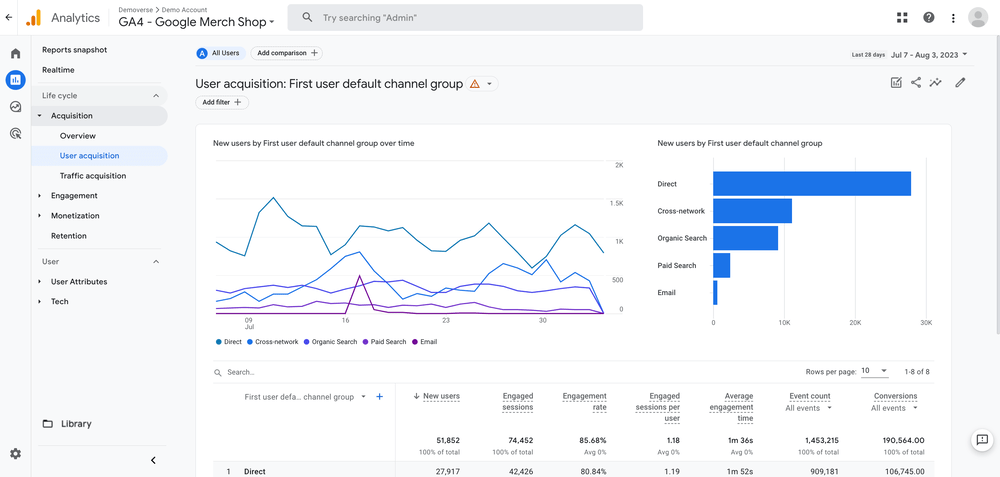
Piwik PRO
Piwik PRO is a paid alternative to Google Analytics. You may think, what’s the point in paying for a tool that has a free substitute? But Piwik PRO’s offer is different than Google’s.
Piwik is a Polish company, meaning they use EU-located servers and don’t share their data with Google ad platforms. If you have any privacy concerns about Google, that’s a good reason to try an alternative.
Of course, that’s not the only difference. See the full comparison here.
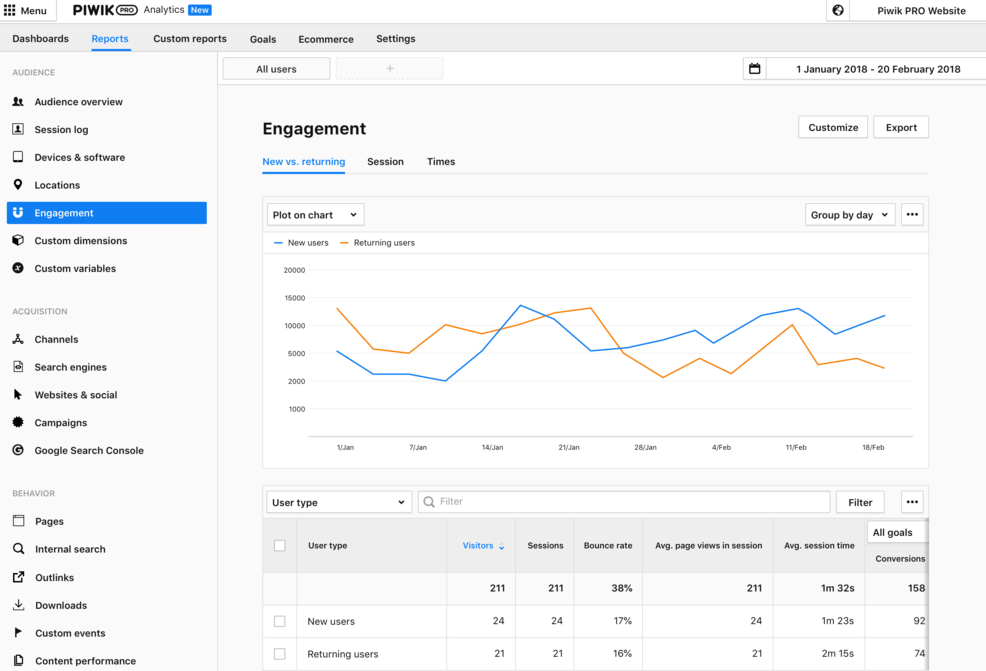
02 Media monitoring tools
Collecting brand mentions and sourcing valuable insights from them is a great marketing strategy that can boost your online presence and improve PR results. Try these out.
Brand24
Brand24 is an AI-powered media monitoring software that provides digital media measurement, social media analytics, and social listening features. It allows you to monitor your online brand presence across multiple channels and gather insights about your brand’s health, awareness, and media performance.

Discover our client’s success story — read the case study.
With advanced machine learning and AI solutions, Brand24 delivers accurate sentiment analysis, helping you understand public perception and refine your communication strategy.
It offers clear key performance indicators (KPIs), in-depth reports, and key features to help avert PR crises and continuously monitor conversations across social media channels.
See the full list of Brand24 features!
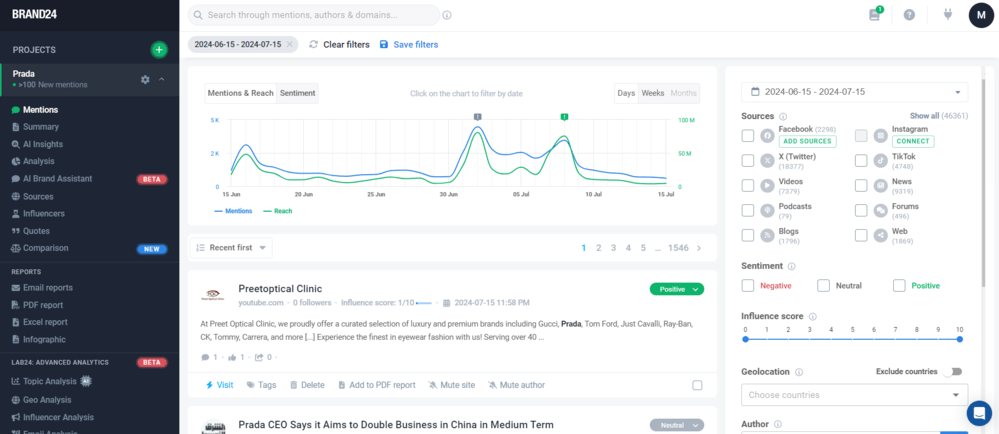
Try Brand24 – the best media monitoring tool!
Brandwatch
Brandwatch is a powerful social media intelligence tool designed for enterprises and big teams.
Brandwatch is a similar tool to Brand24, but with more features (at a much higher price). It aims to provide companies with in-depth analytics about their brand, social media, and online presence.
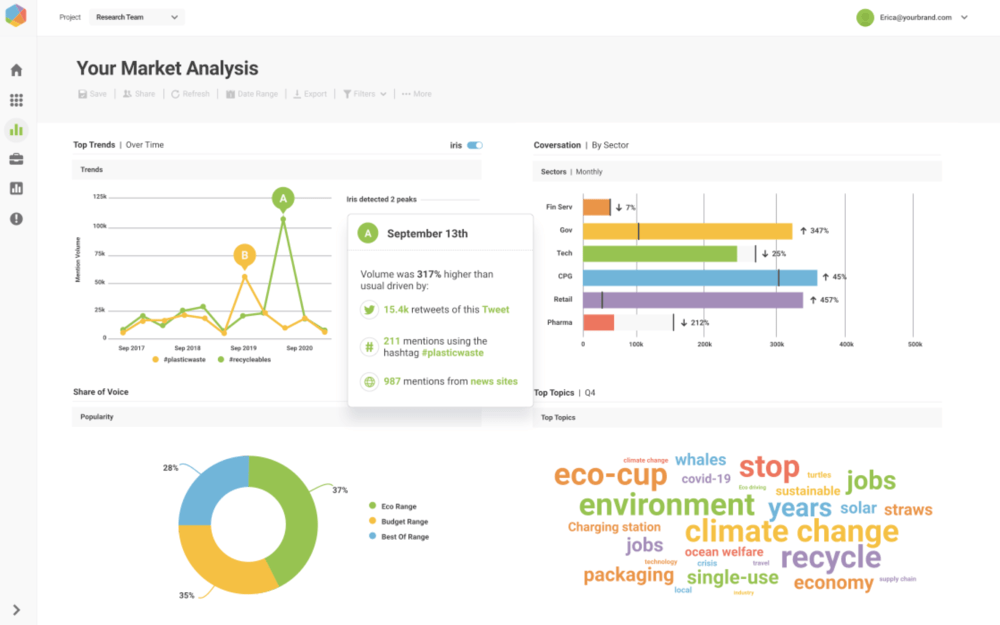
If you are considering a media monitoring tool, read more about media monitoring and see the full list of apps on our blog.
Google Alerts
Google also has a free media monitoring tool you can try. Although it lacks some of the more advanced features that paid tools provide (for example, it cannot measure sentiment and doesn’t provide actionable insights), I can still recommend it.
This is a very basic tool that features keyword alerts anytime somebody mentions targeted keywords online.

03 Social media analytics tools
If you are serious about your social media marketing, you need at least one tool to measure your performance across social channels.
Here are some online apps that can help you monitor the engagement rate and other valuable insights.
(Media monitoring software like Brand24 is also a great solution for social media analytics, but I’ve described it already before.)
Turn data into insights!
Buffer
Buffer is a simple social media management tool with analytics features. If you manage multiple channels, you know how difficult it is to keep track of all your fanpages.
Buffer keeps track of all major social media networks and helps you organize your work while providing useful analytics.
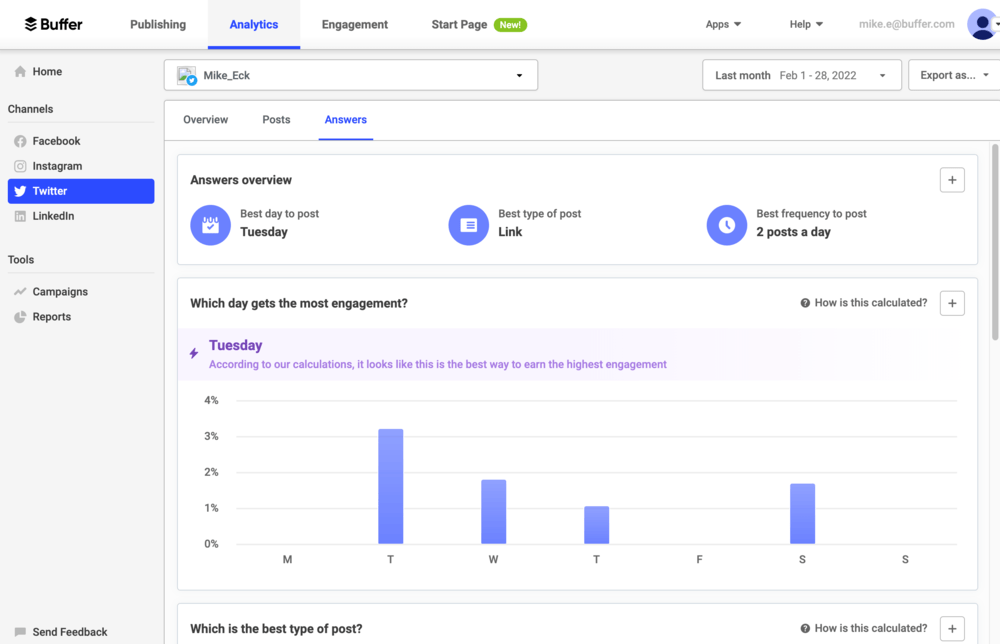
NapoleonCat
NapoleonCat is a social media management tool that helps you track the performance of your social media campaigns across channels and profiles.
It also allows you to track the social media activity of your competitors so you can see what they’re doing well and where you can improve.
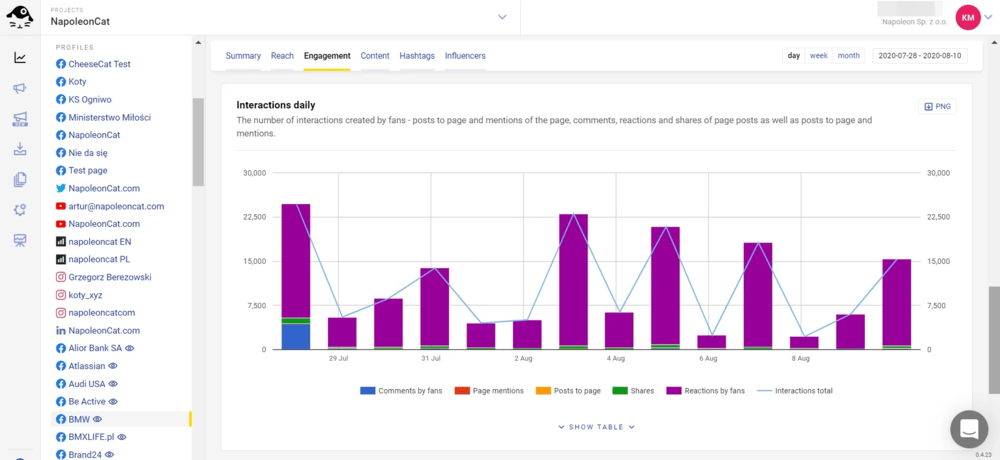
Sotrender
Sotrender is a social media analytics and reporting tool that can make your life much easier. It monitors all major social media platforms and provides detailed analytics about their performance.
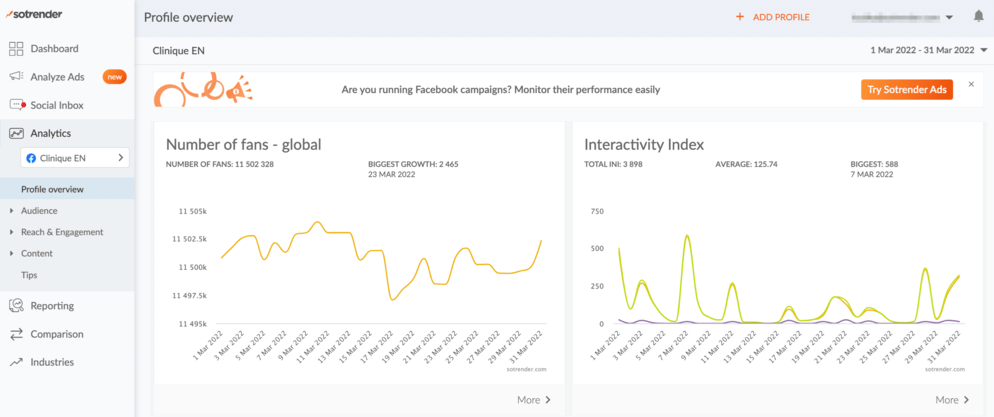
Sprout Social
Another social media analytics tool you can try is Sprout Social. Additionally, it offers in-depth analytics of your social channels, apart from its social media management features.
It’s one of the most popular tools for social media marketers, so it’s easy to find help online if you stumble upon any problems with the dashboard.
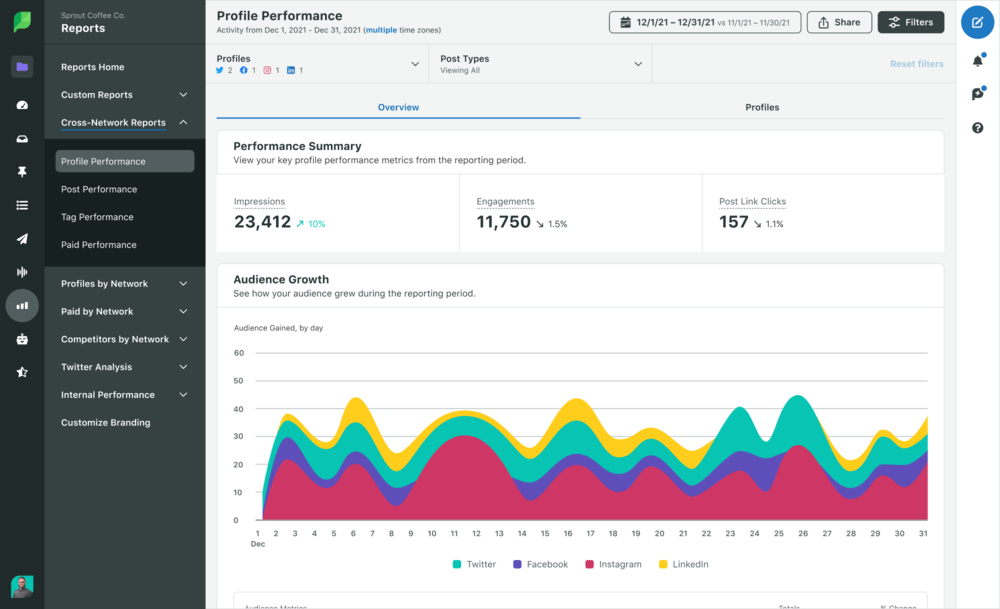
04 SEO tools
To measure key SEO metrics, you can use advanced tools that collect data regarding keyword usage, traffic, and link-building-related info. I can recommend three great SEO tools.
Ahrefs
Ahrefs is a powerful analytics tool you can use to boost your digital marketing game. I use it mainly to monitor the health of my webpage, do keyword research, and check the SERP positions of my key articles.
Ahrefs features an easy-to-use dashboard, historical data, and a comprehensive system of analytics tools that every SEO needs.
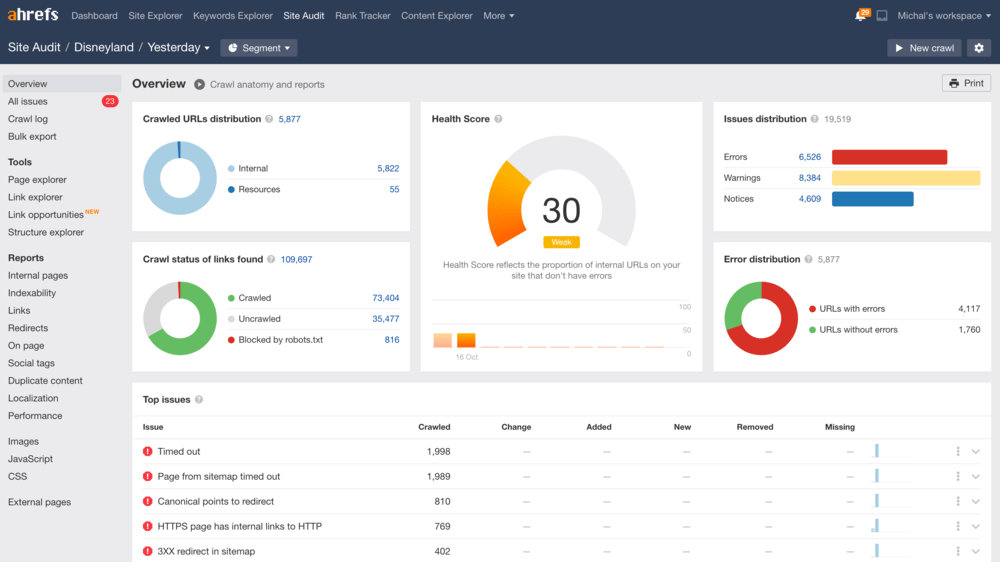
Semrush
Semrush is a direct competitor to Ahrefs and features a similar stack of tools. Ultimately, it all boils down to your preferences and which tools are easier for you.
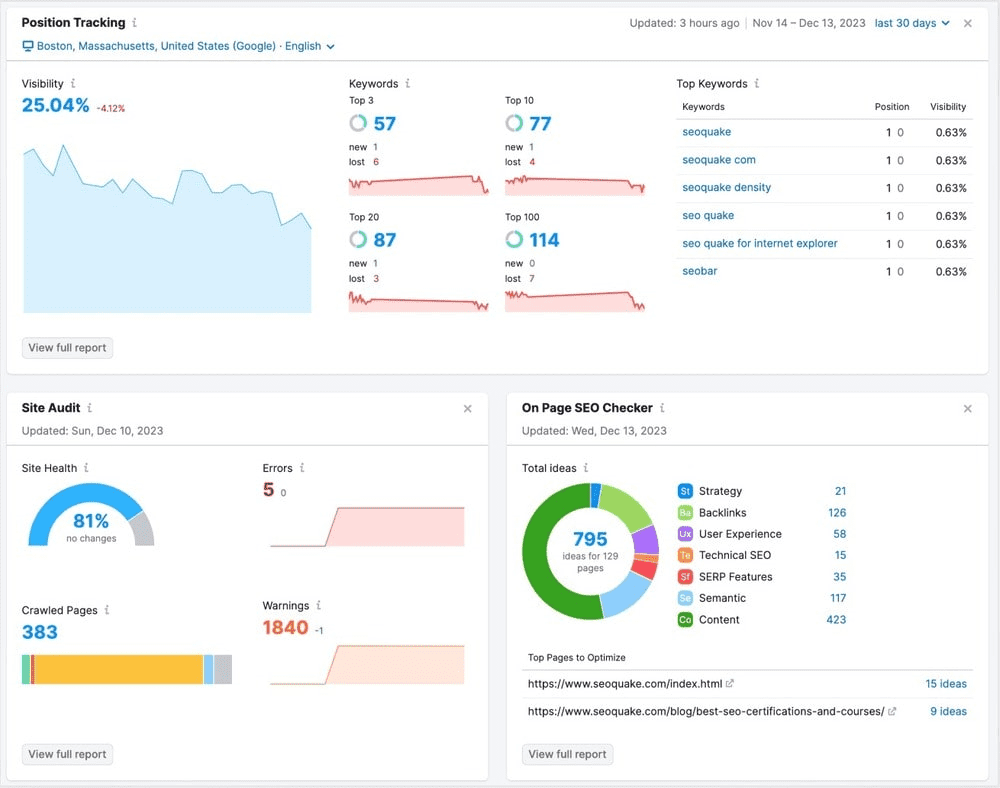
Surfer
Surfer is another SEO research tool, but I’ll recommend it especially for its content editor.
It’s an effective tool for content writers that suggests which keywords to use, how many words your article should have, and some more insights that’ll help you rank number 1 in Google. In fact, I’m using it right now!
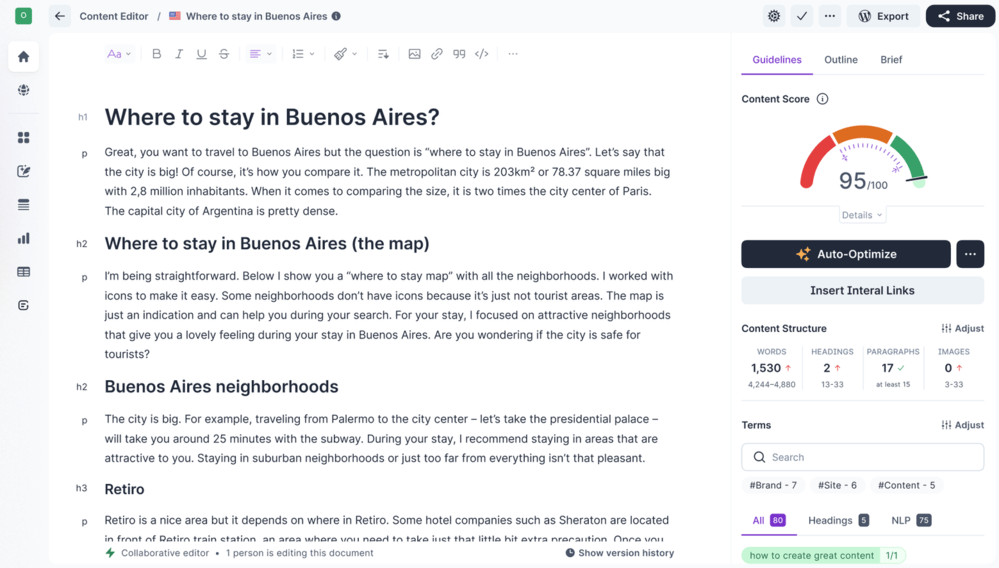
05 Heatmaps
Using heatmaps can tell you a lot about your website. I have one tool for you that you can try.
Hotjar
Hotjar paints heatmaps for your website. You can use it to analyze the user behavior, how they engage with your site, where they click, and how much they scroll down.
You can use the insights to rearrange the content structure of your website and improve user experience.
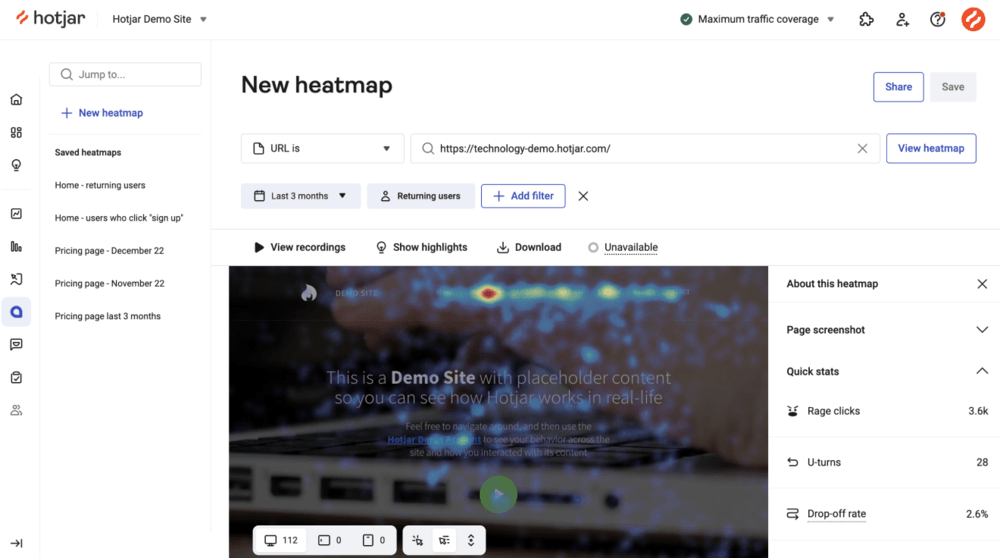
06 E-mail analytics
If you pursue the e-mail marketing strategy, you should be aware of such metrics as the open rate and click-through rate. They will give you an insight into how interesting your e-mail campaigns are.
Mailchimp
Mailchimp is an e-mail marketing platform for all businesses. You can use it to craft beautiful newsletters and later track their performance.
This digital media measurement tool collects data such as the open rate and CTR to determine areas you need to improve. Use its A/B testing feature to test various alternatives of your e-mails.
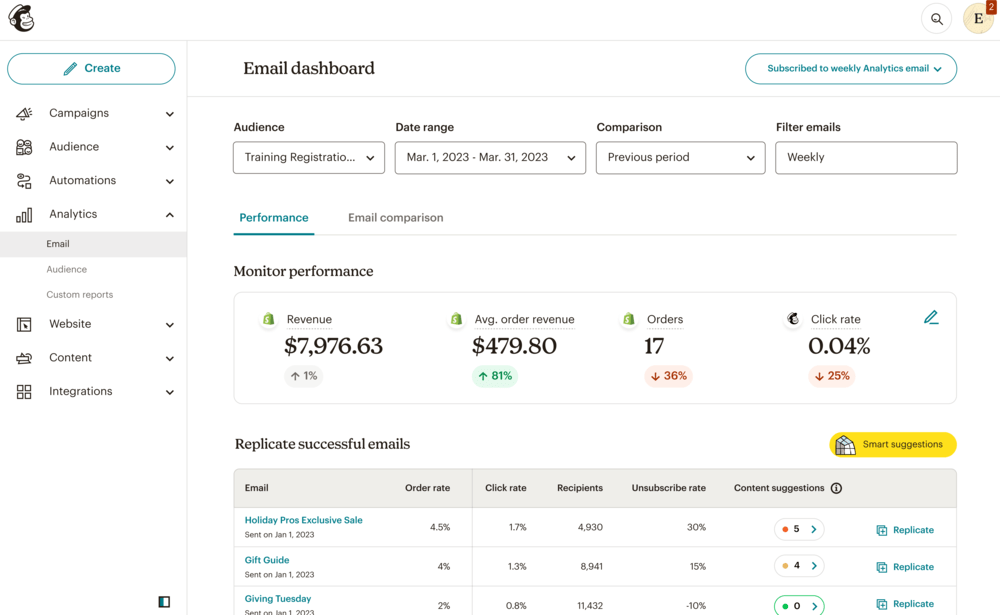
GetResponse
Another great tool for newsletter campaigns is GetResponse. Similar to Mailchimp, it measures the open and click-through rates of your emails, and you can get suggestions on where you can improve.
It’s one of the many marketing automation tools you should test, as it really makes your life as a marketer easier.
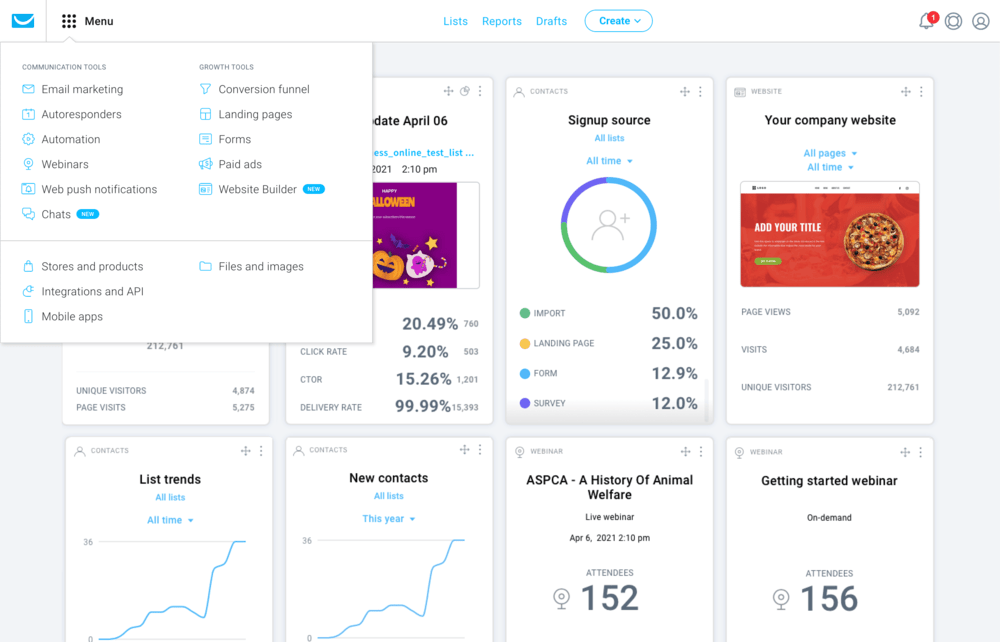
Advantages of using media measurement tools
Measuring your media outlets and marketing efforts is crucial to your business development. Here are the most important advantages of using media measurement tools.
Not using any media measurement tools? It’s time to start!
Data-driven decision making
Utilizing media measurement tools enables marketers to make decisions based on empirical data rather than intuition or guesswork. This leads to more effective and accountable marketing strategies.
ROI analysis
One of the primary goals of any marketing campaign is to achieve a high return on investment (ROI). Media measurement tools help you understand which aspects of your campaigns deliver the highest ROI, allowing for optimization and better resource allocation.
Audience segmentation and targeting
Social media analytics tools offer detailed insights into audience demographics, behaviors, and preferences. This data is invaluable for tailoring campaigns to specific audience segments, thereby increasing engagement and conversion rates.
Real-time feedback
Many digital media measurement platforms offer real-time analytics, providing instant feedback on campaign performance. This allows for quick adjustments and optimizations, making your marketing efforts more agile.
Benchmarking
By using standardized metrics, businesses can benchmark their media performance against industry standards or competitors. This is crucial for identifying areas of improvement and understanding market positioning. Benchmarking against other businesses in your market niche is crucial to competitive analysis.
Budget optimization
Understanding which channels and campaigns are most effective allows for more efficient allocation of marketing budgets. Resources can be focused on high-performing strategies, avoiding waste.
Multi-channel understanding
Some advanced analytics platforms offer integrated views that span across various media channels, from traditional platforms like TV and print to digital spaces like social media and websites. This offers a more holistic understanding of how different channels contribute to your marketing goals.
Performance monitoring
Regular measurement enables ongoing performance monitoring, making identifying trends, opportunities, or issues needing attention easier. This ensures that the brand or business remains proactive rather than reactive in its marketing efforts.
Customer journey mapping
Advanced measurement tools can track the customer journey across multiple touchpoints. Understanding this journey is crucial for improving customer experience and driving conversions and loyalty.
Content effectiveness
Media measurement tools can offer insights into how different types of content (e.g., video, blogs, infographics) perform across various platforms, helping you tailor your content strategy for maximum impact.
